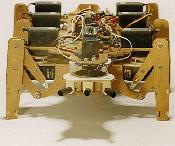Fred Kaplin writes
If your guide to this future is the first 30 days of the war in Iraq, then the vision of transformation that underlies FCS might seem appropriate. However, if your guide is the subsequent two years of combat, then the vision seems out of whack.As retired Maj. Gen. Robert Scales, the president of the Army War College, testified before the House Armed Services Committee:
Technology is useful in unconventional warfare. But machines alone will never be decisive. … The tools most useful in this new war are low-tech and manpower-intensive … night raids, ambushes, roving patrols mounted and dismounted, as well as reconstruction, civic action, and medial contact teams. The enemy will be located not by satellites and [drones] but by patient intelligence work, back alley payoffs, collected information from captured documents, and threats of one-way vacations to Cuba. … Buried in an avalanche of information, commanders still confront the problem of trying to understand the enemy's intention and his will to fight.
The Army ise writing new doctrinal manuals and conducting new training exercises on how to secure and stabilize a country after the battlefield phase of war—a focus that emphasizes boots on the ground, cultural awareness, language skills, and intelligence-gathering based on eye-to-eye contact with the population.
This article brings up the huge amount development needed to understand the requirements of Barnett's sysadmin force. We have the Laviathan portion down but sysadmin is in tatters.
Tags: sysadmin, laviathan, barnett, kaplan, fred kaplan, fcs, future combat systems
Powered by Qumana
 This little gem is less than $600 but smart kids in any country will learn how to hack them and send them on their way. What can this platform be used for? Can it carry weapons? How about surveilance? Tags:
This little gem is less than $600 but smart kids in any country will learn how to hack them and send them on their way. What can this platform be used for? Can it carry weapons? How about surveilance? Tags:  Tags:
Tags: